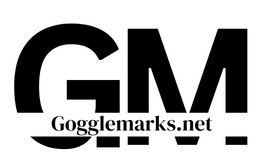Night goggles, also known as night vision goggles or NVGs, are optical devices designed to enhance visibility in low-light conditions. They enable users to see in the dark by amplifying ambient light or detecting infrared radiation.
Evolution and History of Night Goggles
Early Developments
The concept of night vision dates back to the early 20th century, with significant advancements during World War II. Early night vision devices used image intensification technology to amplify available light.
Military Applications
Night goggles gained prominence during military operations, allowing soldiers to conduct covert missions and navigate in darkness. The development of generations of night vision technology revolutionized warfare, providing a significant tactical advantage to armed forces.
How Night Goggles Work
Night goggles operate based on two primary technologies: image intensification and thermal imaging.
Image Intensification
Image intensification works by collecting and amplifying available light, making objects visible even in extremely low-light conditions. These devices convert photons into electrons, amplify the signal, and then reconvert the electrons into visible light.
Thermal Imaging
Thermal imaging detects heat emitted by objects and converts it into a visible image. Unlike image intensification, thermal imaging does not rely on ambient light, making it effective in total darkness or adverse weather conditions.
Types of Night Goggles
Night goggles are available in various types, categorized based on their generation and technology.
Generation 1, 2, 3, and 4
Night goggles are classified into generations, with each generation representing advancements in technology and performance. Generation 1 goggles are the most basic, while Generation 4 offers the highest image quality and performance.
Thermal Night Vision Goggles
Thermal night vision goggles use infrared technology to detect heat signatures, making them ideal for detecting objects in complete darkness or obscured environments.
Applications of Night Goggles
Night goggles find applications across various fields, including military, law enforcement, surveillance, and outdoor activities.
Military and Law Enforcement
Night goggles are extensively used by military personnel and law enforcement agencies for reconnaissance, surveillance, and tactical operations, providing a crucial advantage in low-light environments.
Surveillance and Security
In the civilian sector, night goggles are utilized for surveillance and security purposes, allowing security personnel to monitor premises and detect intruders during nighttime hours.
Outdoor Activities
goggles are also popular among outdoor enthusiasts for activities such as hunting, camping, and wildlife observation, enabling them to explore the wilderness after dark safely.
Advantages of Using Night Goggles
Night goggles offer several advantages over conventional vision in low-light conditions.
Enhanced Visibility in Low-Light Conditions
By amplifying ambient light or detecting infrared radiation, goggles provide users with clear visibility in environments where natural light is limited or absent.
Improved Safety and Security
Night goggles enhance safety and security by enabling users to navigate and identify potential threats in darkness, reducing the risk of accidents or security breaches.
Factors to Consider When Choosing Night Goggles
When selecting goggles, several factors should be taken into account to ensure optimal performance and suitability for specific applications.
Generation and Technology
Consider the generation and technology of the goggles, as higher generations typically offer better image quality and performance but come at a higher cost.
Budget
Set a budget based on your requirements and priorities, balancing the features and performance of goggles with affordability.
Durability and Quality
Choose goggles that are durable and of high quality, capable of withstanding harsh environmental conditions and prolonged use.
Tips for Using Night Goggles Effectively
To maximize the effectiveness of goggles, users should follow these tips for optimal performance.
Proper Maintenance
Regularly clean and maintain goggles to ensure clear vision and longevity. Follow manufacturer instructions for cleaning and storage.
Adjusting Settings
Familiarize yourself with the settings and adjustments of goggles, such as brightness and focus, to adapt to changing conditions and optimize visibility.
Avoiding Glare
Minimize glare by avoiding direct exposure to bright light sources, which can reduce the effectiveness of goggles and cause discomfort to the user.
Future Trends in Night Goggles Technology
The future of goggles technology holds promising advancements that will further enhance performance and capabilities.
Advancements in Image Resolution
Continued advancements in image resolution will result in sharper and more detailed images, improving situational awareness and target identification.
Integration with Other Devices
Night goggles will increasingly be integrated with other devices, such as augmented reality systems and wearable technology, expanding their functionality and versatility.
Conclusion
Night goggles have revolutionized the way humans perceive and navigate in low-light environments, offering enhanced visibility and security across various applications. With ongoing technological advancements, the future of goggles holds even greater potential for improving performance and functionality.
Unique FAQs
Can night goggles be used during the day?
While some goggles can be used during the day, prolonged exposure to bright sunlight may damage the device or cause discomfort to the user.
Are goggles legal for civilians to own?
Yes, night are legal for civilians to own in many countries, although certain restrictions may apply, especially regarding export and use in certain areas.
Do goggles work in all weather conditions?
Night goggles are designed to work in various weather conditions, including fog, rain, and snow, although extreme weather conditions may affect their performance.
How far can night goggles see in the dark?
The range of goggles depends on factors such as generation, technology, and ambient light conditions, with some devices capable of detecting objects several hundred meters away.
Can night goggles be used underwater?
While some goggles are waterproof and suitable for use in wet environments, most are not designed for underwater use and may malfunction if submerged.
Also Visit:
929 357 2746 : Exploring the Hidden Stories Behind 929-357-2746
SSIS 816: Everything You Need to Know About It




